Artificial Intelligence (AI) writing tools are powerful applications that leverage machine learning algorithms to assist users in generating, editing, and enhancing written content. These tools have gained significant popularity recently due to their ability to streamline the writing process and improve output quality.
In this article, we will explore the inner workings of AI writing tools, their diverse applications, and their implications on the future of writing.
How do AI writing tools work?
At the core of AI writing tools are advanced language models, such as GPT (Generative Pre-trained Transformer), which are trained on vast amounts of text data. These models learn patterns, grammar rules, and writing styles from the training data, enabling them to generate coherent and contextually relevant text. When a user inputs a prompt or a piece of text, the AI writing tool analyzes the input and generates a response based on its understanding of language and the patterns it has learned.
The most common approach used by AI writing tools is “language modeling.” Language modeling involves predicting the likelihood of a sequence of words based on the context provided. AI writing tools use this technique to generate text that is grammatically correct and semantically meaningful. They consider the surrounding words, the context, and the user’s input to produce text that flows naturally and aligns with the desired tone and style.
What can AI writing tools be used for?
AI writing tools offer various applications that cater to various writing needs. Let’s explore some of the most prominent use cases:
Interactive learning and feedback
AI writing tools can serve as interactive learning platforms, providing users with real-time feedback and suggestions to improve their writing skills. One notable example is ChatGPT, an AI-powered chatbot developed by OpenAI. ChatGPT engages users in conversational interactions, answering questions, providing explanations, and offering guidance on various topics. Through interactive discussions and examples, it can help users enhance their understanding of language, grammar, and writing techniques.
Example: Using ChatGPT for interactive learning
Imagine a student who is struggling with essay writing. They can engage with ChatGPT and seek guidance on structuring their essay, developing arguments, and improving their writing style. ChatGPT can provide personalized feedback, suggest alternative phrasings, and offer tips to make the essay more compelling. This interactive learning experience allows students to learn at their own pace and receive immediate feedback, facilitating a more effective learning process.
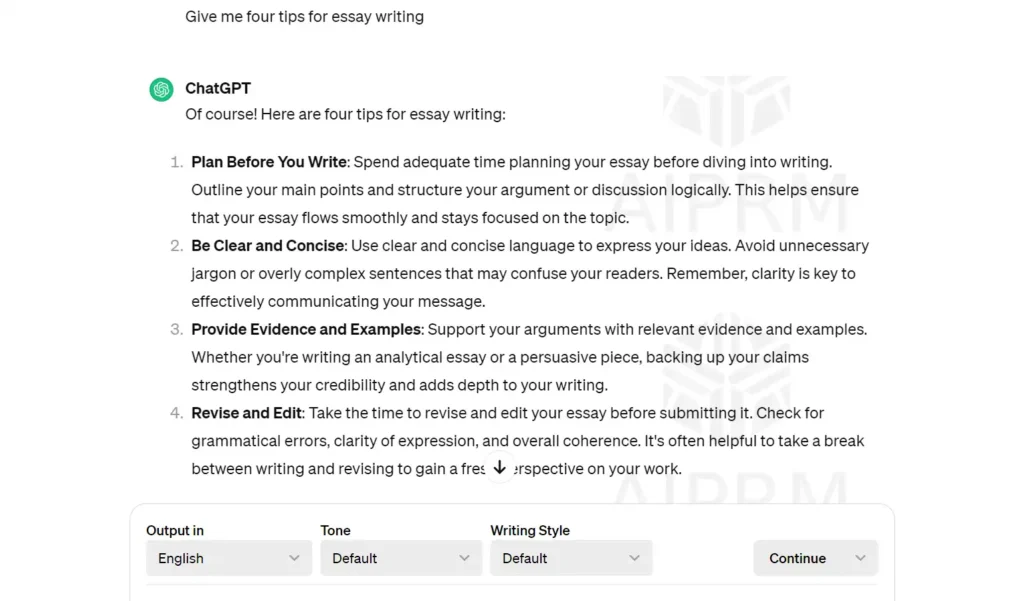
Generating research questions and outlines
AI writing tools can assist researchers and students in generating research questions and outlining their research methods. By analyzing a given topic or research area, these tools can suggest relevant questions to explore and provide a structured outline for conducting the research. This feature saves time and helps users focus on the most important aspects of their research.
Example: Using ChatGPT to generate research questions and methods
A researcher working on a project about the impact of social media on mental health can leverage ChatGPT to generate potential research questions. By inputting the topic and any specific requirements, ChatGPT can suggest questions such as “How does the frequency of social media use affect anxiety levels in teenagers?” or “What are the long-term effects of social media addiction on mental well-being?” Additionally, ChatGPT can outline research methods, including data collection techniques, sample size considerations, and data analysis approaches.
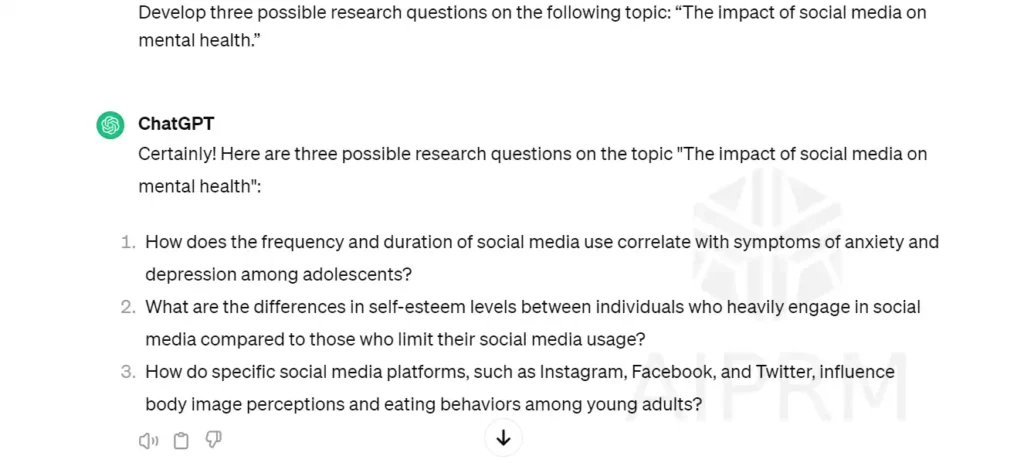
Paraphrasing text
AI writing tools can help users paraphrase existing text, ensuring that the original meaning is preserved while using different words and sentence structures. This feature is particularly useful when users need to avoid plagiarism or want to simplify complex language for better understanding.
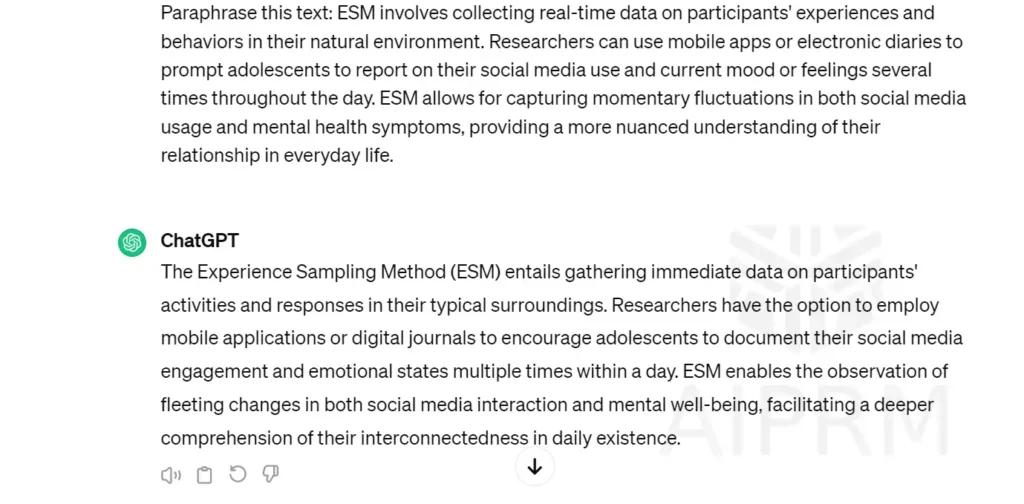
Summarizing text
AI writing tools can automatically generate concise summaries of lengthy articles, reports, or documents. By identifying the key points and essential information, these tools can create readable and coherent summaries, saving users time and effort in comprehending large volumes of text.
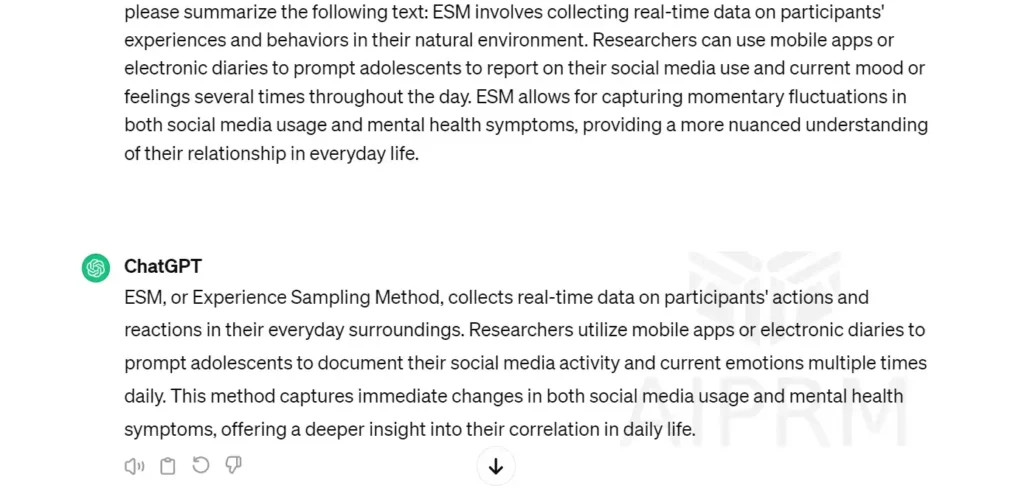
Proofreading text
AI writing tools can assist users in proofreading their written content and identifying grammatical errors, spelling mistakes, and punctuation issues. These tools use advanced algorithms to analyze the text and provide suggestions for improvement, ensuring that the final output is polished and error-free.
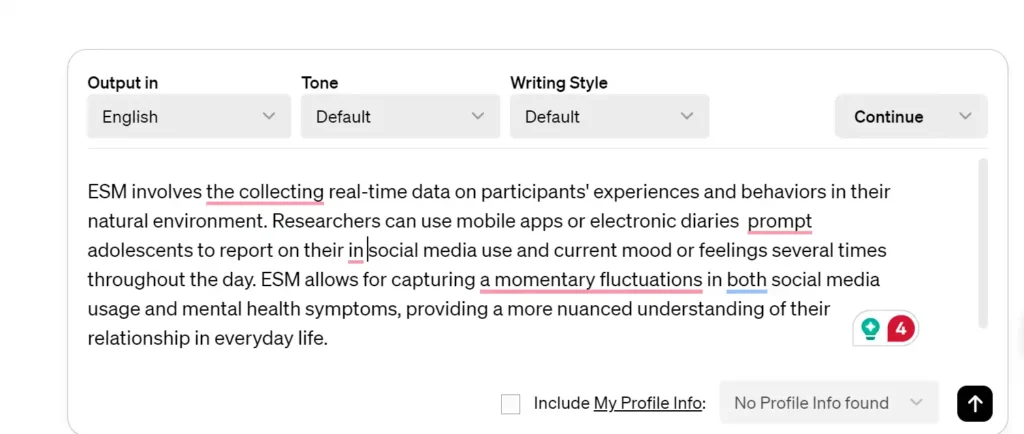
Translating text
AI writing tools can translate text from one language to another, breaking down language barriers and enabling users to communicate effectively across different languages. These tools use neural machine translation techniques to provide accurate and contextually relevant translations.
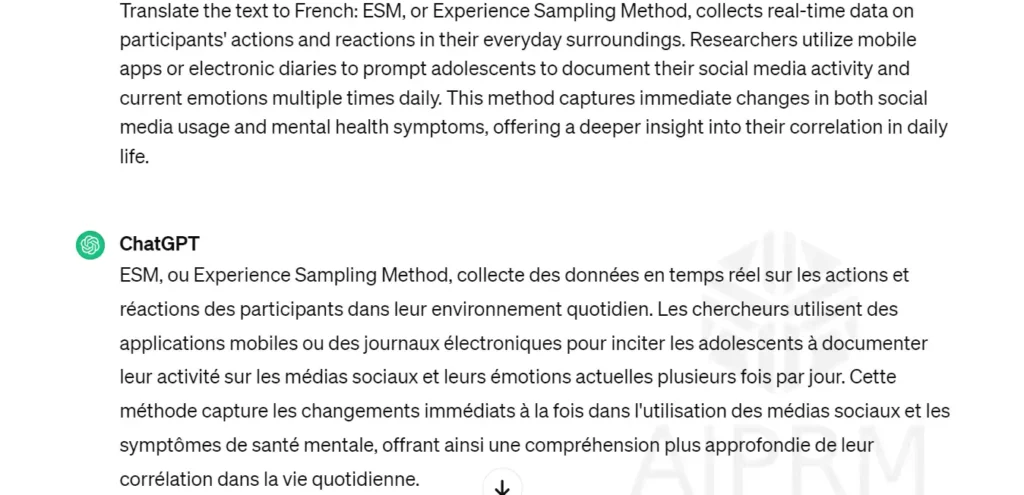
Implications of AI writing tools
While AI writing tools offer numerous benefits, their implications for writing and learning must be considered.
Impact on learning
AI writing tools have the potential to transform the way we learn and develop writing skills. They provide immediate feedback, personalized guidance, and interactive learning experiences, enabling users to improve their writing abilities at their own pace. However, there is a risk of over-reliance on these tools, which may hinder the development of critical thinking and original writing skills. It is crucial to balance leveraging AI tools as a supportive resource and cultivating independent writing abilities.
Consistency and accuracy
AI writing tools can ensure consistency in writing style, tone, and formatting across different pieces of content. They can help maintain a uniform voice and adhere to specific guidelines, which is particularly valuable for organizations with strict branding and communication standards. However, it is important to note that AI tools are not infallible and may occasionally generate inaccurate or inconsistent content. Human oversight and editing remain essential to ensure the accuracy and quality of the final output.
Grammatical mistakes
While AI writing tools are designed to identify and correct grammatical errors, they may not always catch every mistake. Some errors may be contextual or require a deeper understanding of the subject. Additionally, AI tools may struggle with complex sentence structures or idiomatic expressions. It is crucial for users to review and proofread the generated content to ensure its grammatical integrity.
Ethics and plagiarism
The use of AI writing tools raises ethical concerns regarding authorship and plagiarism. When AI tools generate content based on existing sources, there is a risk of unintentional plagiarism if proper attribution is not given. Users must understand the limitations of AI-generated content and use it responsibly. Plagiarism detection tools may need to evolve to accommodate the unique challenges posed by AI writing tools.
AI writing tools are revolutionizing the way we approach writing and learning. They offer a range of applications, from interactive learning and feedback to generating research questions, paraphrasing, summarizing, proofreading, and translating text. These tools have the potential to streamline the writing process, improve the quality of output, and enhance learning experiences.
As we embrace these powerful tools, it is essential to balance leveraging their benefits and cultivating critical thinking and original writing skills. The future of writing is undoubtedly intertwined with AI, and it is up to us to harness its potential while navigating its challenges responsibly.